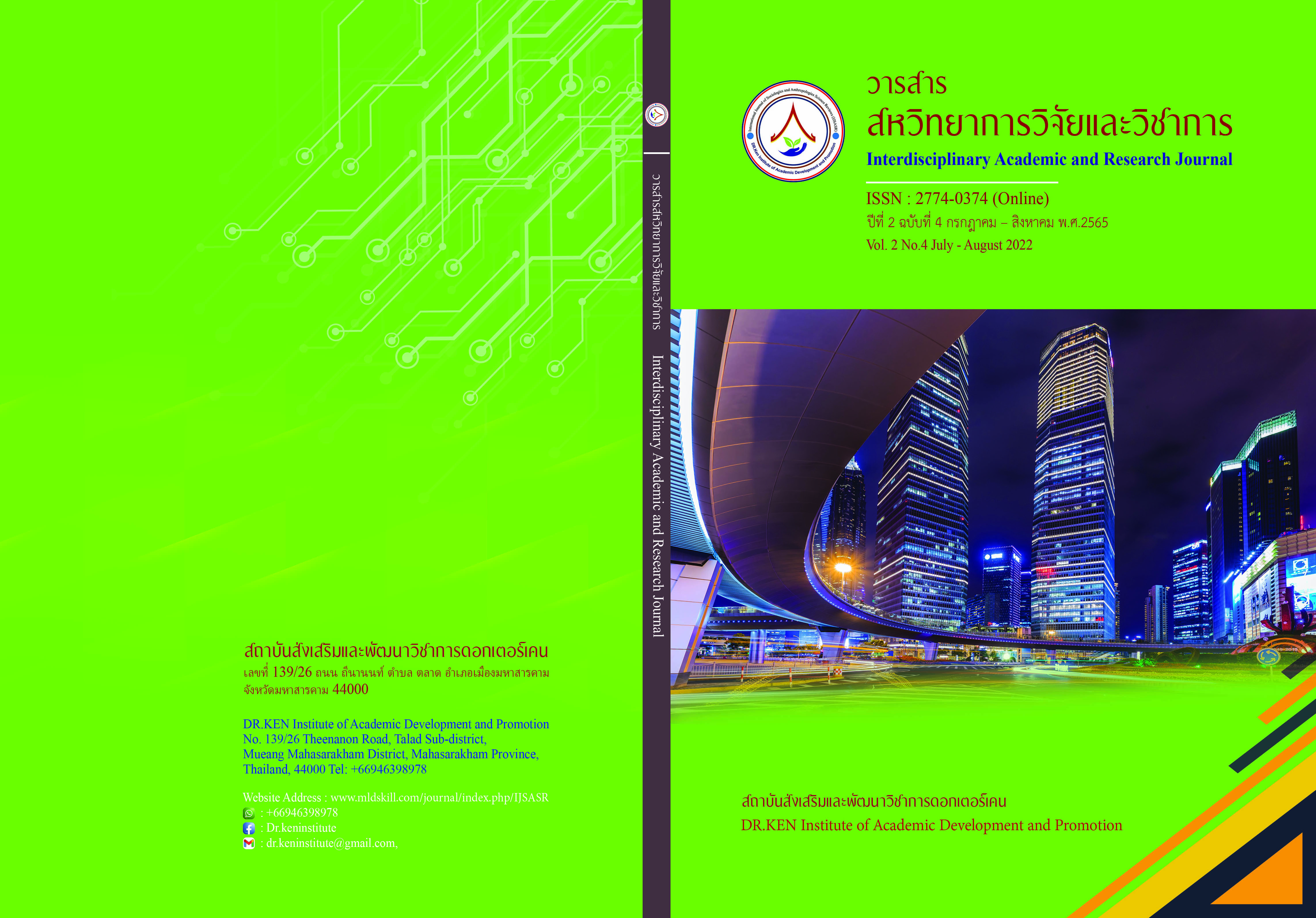The Development of Lisu Hand Woven Fabrics for Commercial Purpose: A Case of Lisu Tribal Community in Khirirat Subdistrict Phopphra District, TAK Province
DOI:
https://doi.org/10.14456/iarj.2022.60Keywords:
Product Development for Commercial; , Lisu Hand Woven FabricsAbstract
Khirirat Subdistrict, Phob Phra District, Tak Province is an area with a large number of Lisu people living, This is a unique community, a way of life, and a peaceful tribal life. It is also an area with many natural and cultural attractions. It is a destination and transit destination for many Thai and foreign tourists. However, the community still lacks the identity of the Lisu tribe to develop products to create commercial benefits and create jobs and incomes for the community. Therefore, this research is the study and development of Lisu hand-woven fabrics a case of the Lisu Tribal community in Khirirat Subdistrict Phopphra District, TAK Province, with the objectives: (1) To study the basic knowledge of weaving of the Lisu tribe. (2) To develop a product of Lisu woven fabric. (3) To study the satisfaction of the newly developed Lisu hand-woven products. The samples used in this research were a group of tourists and a group of working people in the area of Phop Phra District and Maesot District, Tak Province total of 323 people, using random sampling. The tools used in the research were interview forms on the basic knowledge of weaving of wisdom and a satisfaction questionnaire. The results of the study found that (1) The basics of weaving wisdom in terms of techniques, patterns, and weaving patterns have been passed down from generation to generation, causing adhesion There is no improvement and development of new patterns and styles. resulting in a lack of distinctive features that will attract customers. (2) There has been an improvement in the development of a weaving pattern called the herringbone pattern, which is a unique and traditional pattern of the Lisu tribe. and applied sewing into a more modern women's handbag. The results of the study of satisfaction with the newly developed Lisu hand-woven products Overall, it was found that there was a high level of satisfaction. Mean 4.31 standard deviation 0.5. beauty Satisfaction ranks first. Satisfaction was at a high level, with a mean of 4.35 and a standard deviation of 0.53. In terms of beautiful colors, it had a mean of 4.45 and a standard deviation of 0.59.
References
กิตติพงษ์ เกียรติวิภาค. (2559). การศึกษาและพัฒนาการนำผ้าฝ้ายทอมือ มาประยุกต์ใช้ในการสร้างสรรค์เพื่อพัฒนาผลิตภัณฑ์ กรณีศึกษา : กลุ่มหมู่บ้านผ้าฝ้ายทอมือบ้านดอนหลวง อำเภอป่าซาง จังหวัดลำพูน.ศิลปกรรมสาร. 11 (1), 13-52.
ใจภักดิ์ บุรพเจตนา. (2559). การพัฒนาผลิตภัณฑ์สิ่งทอประเภทของที่ระลึกของชุมชนบ้านหาดเสี้ยวจังหวัดสุโขทัย.วารสารวิชาการ AJNU ศิลปะสถาปัตยกรรมศาสตร์มหาวิทยาลัยนเรศวร. 7 (1),146-159.
ญาณิศา โกมลสิริโชค. (2558). การพัฒนาผลิตภัณฑ์สิ่งทอจากผ้าทอกะเหรี่ยงเพื่อสร้างเอกลักษณ์ของอำเภอดอยเต่า จังหวัดเชียงใหม่. มหาวิทยาลัยเทคโนโลยีราชมงคลล้านนา
ณงค์ณุช นทีพายัพทิศ (2557). อัตลักษณ์ผ้าทอกะเหรี่ยงปกาเกอะญอ. วารสารการพัฒนาชุมชนและคุณภาพชีวิต. 2(1), 113-121.
ตุนท์ ชมชื่น และสมชาย ใจบาน (2558). การเสริมสร้างศักยภาพการผลิต ผลิตภัณฑ์ชุมชน “ผ้าทอกะเหรี่ยง” ตามแนวคิดเศรษฐกิจพอเพียงและเศรษฐกิจ สร้างสรรค์: กรณีชุมชนตำบลแม่ยาว อำเภอเมือง จังหวัดเชียงราย. วารสารการพัฒนาชุมชนและคุณภาพชีวิต. 3(2), 203-214
มหาวิทยาลัยนเรศวร. (2551). วัฒนธรรมการแต่งกายของชนเผ่าลีซู, [Online]. http://www.openbase.in.th/node/5466. [2 มีนาคม 2562]
สิริพิชญ์ วรรณภาส. (2551). เอกสารการสอนชุดวิชาการพัฒนาผลิตภัณฑ์ชุมชน. สำนักพิมพ์มหาวิทยาลัยสุโขทัยธรรมาธิราช.
อรุณวรรณ ตั้งจันทร, เกษร ธิตะจารี, นิรัช สุดสังข์ (2556). การพัฒนาผลิตภัณฑ์เคหะสิ่งทอจากผ้าปักชาวเขาเผ่าม้ง จังหวัดเพชรบูรณ์. วารสารวิชาการศิลปะสถาปัตยกรรมศาสตร์มหาวิทยาลัยนเรศวร, 4 (2), 55-67.
Likert, R. N. (1970). A technique for the measurement of attitude, Attitude Measurement. Chicago: Ronal McNally & Company.
Downloads
Published
How to Cite
Issue
Section
License
Copyright (c) 2022 ภัคพล รื่นกลิ่น

This work is licensed under a Creative Commons Attribution-NonCommercial-NoDerivatives 4.0 International License.
Copyright on any article in the Interdisciplinary Academic and Research Journal is retained by the author(s) under the under the Creative Commons Attribution-NonCommercial-NoDerivatives 4.0 International License. Permission to use text, content, images, etc. of publication. Any user to read, download, copy, distribute, print, search, or link to the full texts of articles, crawl them for indexing, pass them as data to software, or use them for any other lawful purpose. But do not use it for commercial use or with the intent to benefit any business.
















.png)


